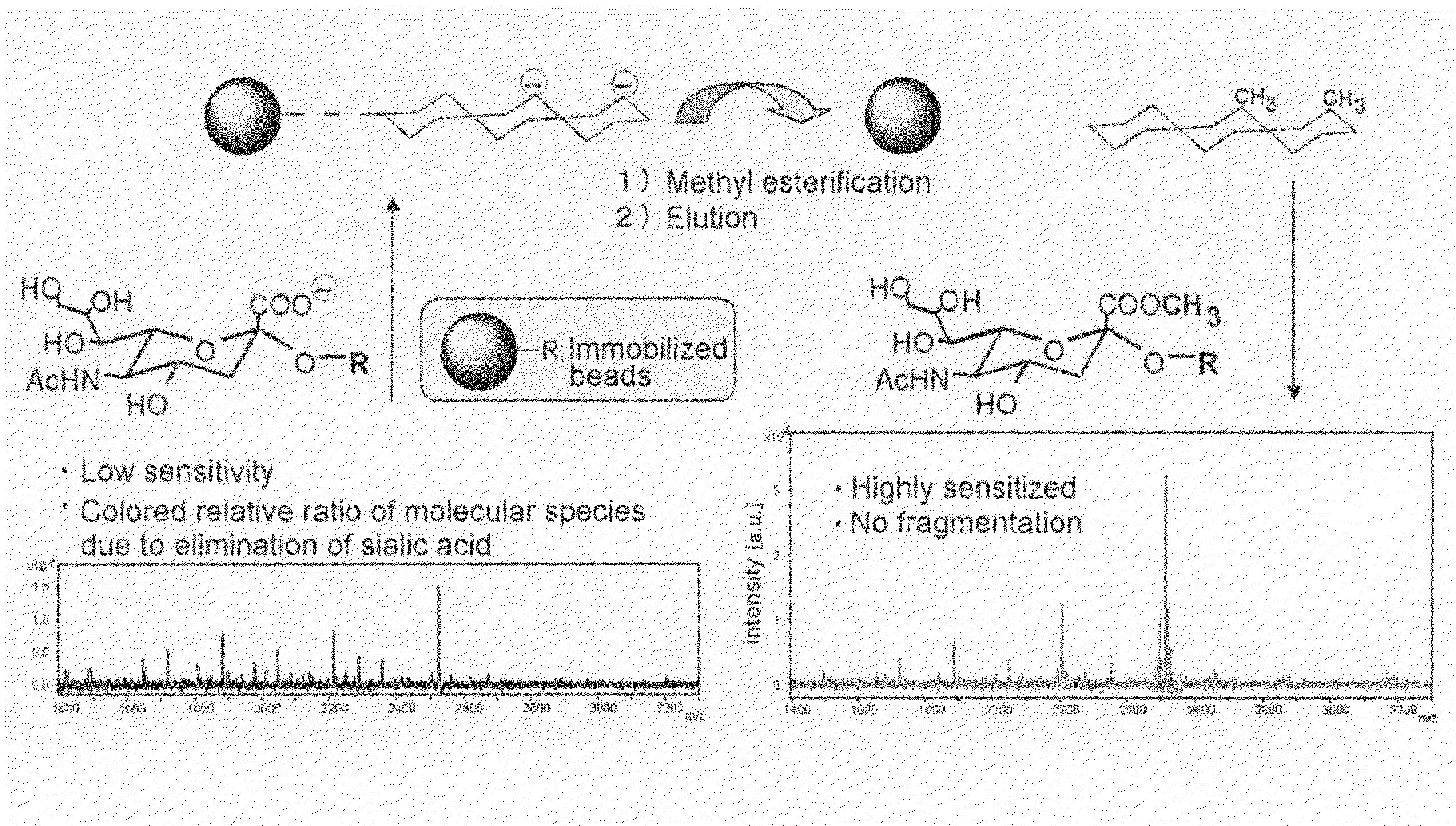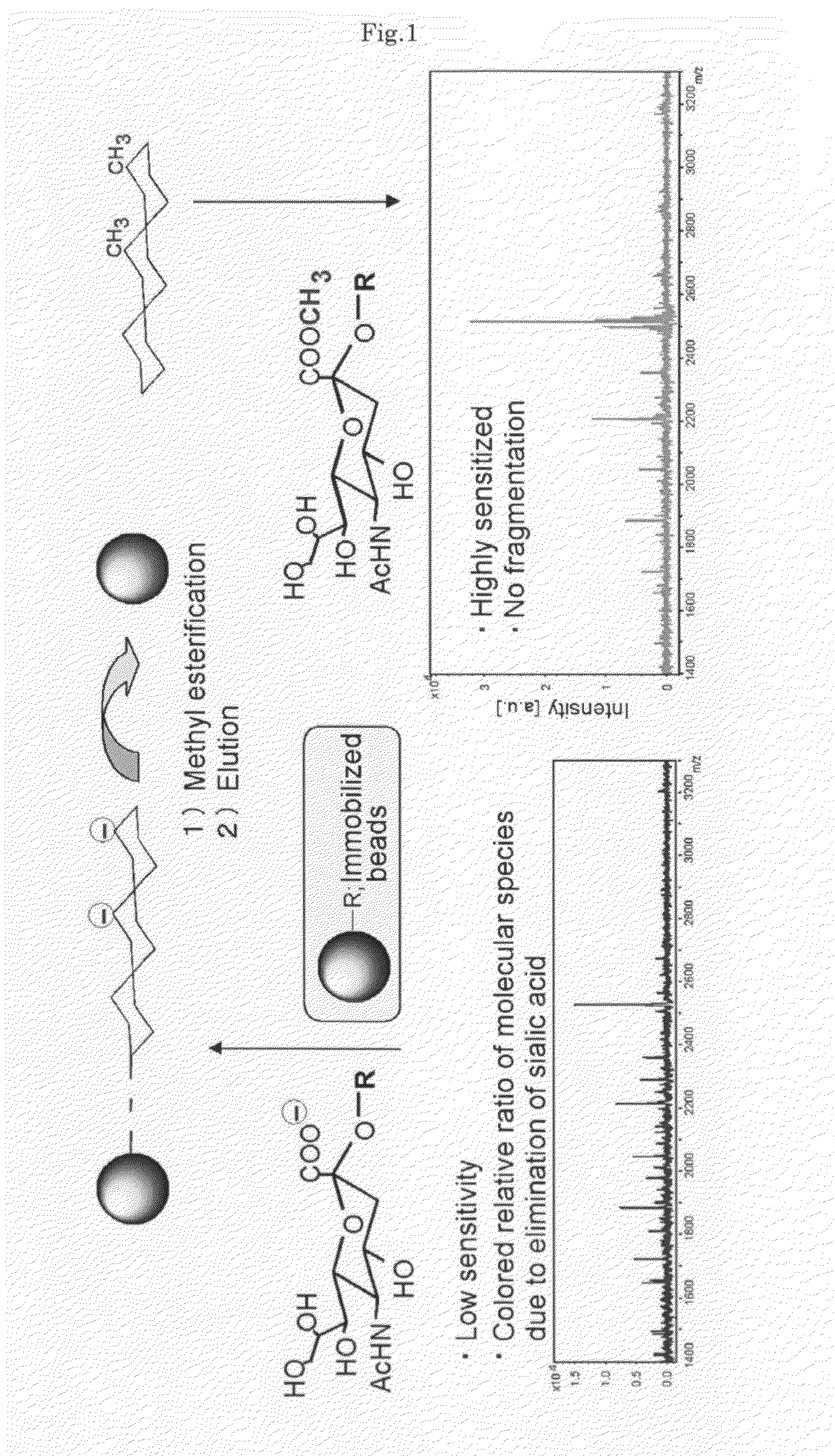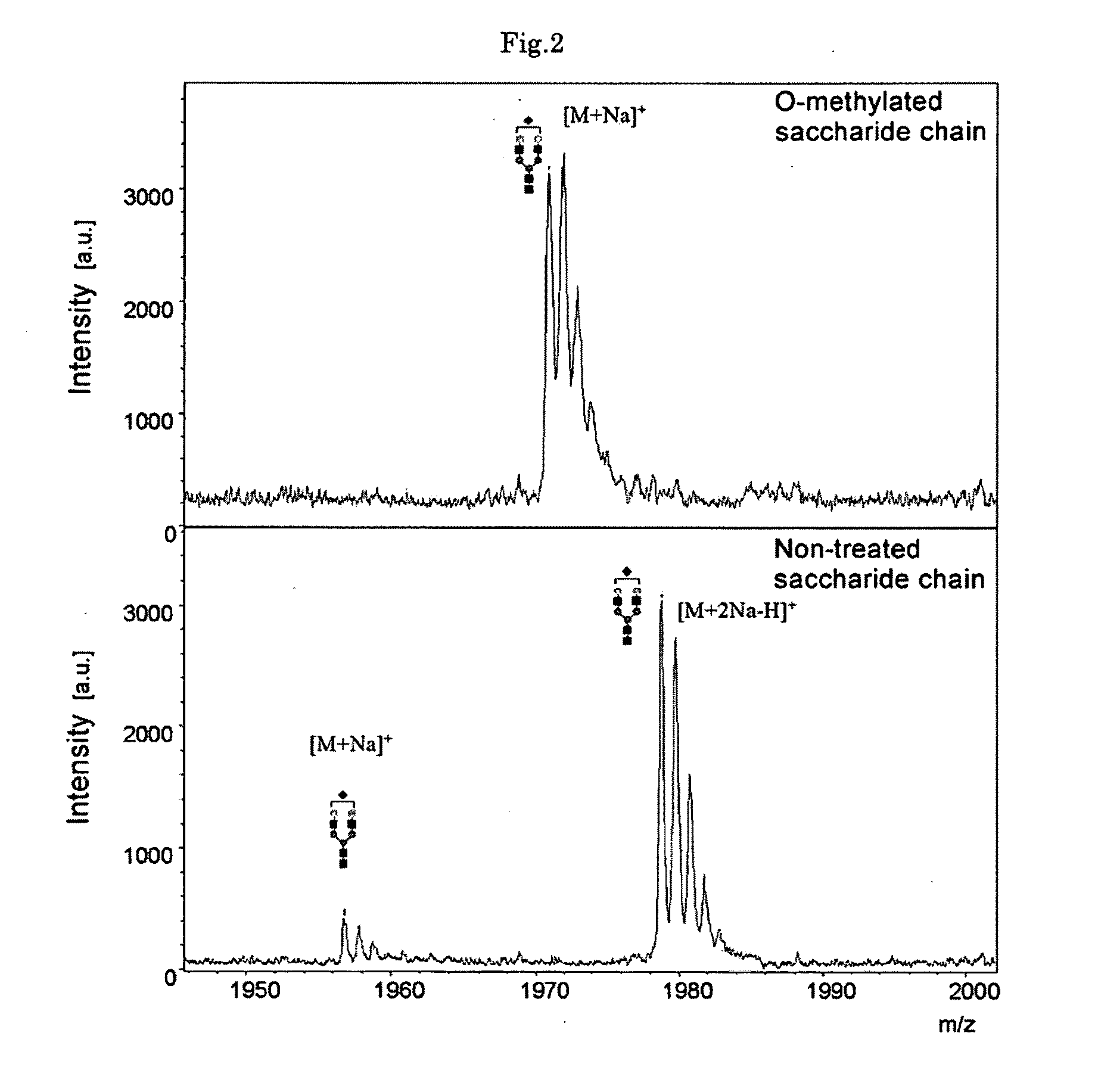Method of Esterifying Bio-Related Molecule for Mass Spectrometry and Method of Mass Spectrometry of Obtained Esterified Derivative
a bio-related molecule and mass spectrometry technology, applied in the field of esterification bio-related molecules for mass spectrometry and the method of mass spectrometry of obtained esterified derivatives, can solve the problems of poor overall fragment ion detection rate, difficult analysis, and difficult to obtain fragment ions that have cleaved at the site of other amino acid residues, so as to enhance analysis precision and sensitivity in mass spectrometry, and accelerate and convenient ester
- Summary
- Abstract
- Description
- Claims
- Application Information
AI Technical Summary
Benefits of technology
Problems solved by technology
Method used
Image
Examples
embodiment 1
[0064]An experiment was conducted to confirm by mass spectrometry that methyl esterification could be conducted on an insoluble support using 3-methyl-1-(p-tolyl)triazene (MTT) on an albumin-derived N-type saccharide chain sample.
[0065]An albumin-derived N-type saccharide chain sample was prepared by the method of Seko et al. and the saccharide chain was liberated by the usual method based on PNGase F (Seko A, Koketsu M, Nishizono M, Enoki Y, Ibrahim H R, Juneja L R, Kim M, Yamamoto T. Occurrence of a sialylglycopeptide and free sialylglycans in hen's egg yolk. Biochim Biophys Acta. 1997 Apr 17: 1335 (1-2): 23-32).
[0066]Silica gel beads (Iatrobead, Iatron Laboratories) were employed as the solid phase support. A one μL quantity of about 1 mM free saccharide chain aqueous solution was added to an equivalent quantity of 10 mM HCl and the mixture was diluted with a 20-fold quantity of acetonitrile. The mixture was placed on a silica gel bead column that had been equilibrated with aceto...
embodiment 2
[0072]Gold nanoparticles (GCNP) were used as an insoluble support and sialic acid-containing oligosaccharides that had been immobilized on GCNP were methyl esterified with MTT. An experiment was conducted by mass spectrometry to determine their usefulness.
[0073]After supporting Galβ1,4 GlcNAc (LacNAc) disaccharide on GCNP with covalent bonds, recombinant rat α2,6-sialyltransferase was maintained at 37° C. for 24 hours in 50 mM cacodylic acid buffer (pH 6.0, 0.5 percent Trion CF-54) in the presence of 800 μM CMP-N-acetylneuramic acid (CMP-Neu5Ac), yielding GCNP supporting sialic acid-containing oligosaccharide. Following the reaction, cleaning was conducted with deionized water and purification was conducted by ultrafiltration with a YM-50 made by Millipore.
[0074]The sialic acid-containing GCNP was dissolved in 5 μL of deionized water, and the solution was mixed with 1 μL of 50 mM hydrochloric acid and 200 μL of acetonitrile. Following centrifugation, drying was conducted, 5 μL of 0....
embodiment 3
[0077]An example of the application of methyl esterification of peptide carboxylic acid will be given.
[0078]Silica gel beads were employed as an insoluble support. A trypsin degradation product of transferrin (Tf) was provided as a model peptide. Following the methyl esterification with MTT of Tf peptide immobilized on silica gel, an experiment was conducted to confirm the methyl esterification reaction by mass spectrometry.
[0079]The usual method was utilized to hydrolyze Tf with trypsin to peptides, 10 μL of degradation product was mixed with 10 μL of 0.1 M hydrochloric acid, and 400 μL of acetonitrile was added. Silica gel (50 μL) was packed in a spin column and equilibrated with acetonitrile, after which the mixture was added. After removing the unreacted material by centrifugation, the mixture was washed with acetonitrile in a centrifugal operation. A 50 μL quantity of 0.1 M MTT solution (DMSO-acetonitrile, 1:1) was added and the mixture was maintained for 1 hour at 60° C. Follo...
PUM
| Property | Measurement | Unit |
|---|---|---|
| acid | aaaaa | aaaaa |
| mass spectrometry | aaaaa | aaaaa |
| acid group | aaaaa | aaaaa |
Abstract
Description
Claims
Application Information
 Login to View More
Login to View More - R&D
- Intellectual Property
- Life Sciences
- Materials
- Tech Scout
- Unparalleled Data Quality
- Higher Quality Content
- 60% Fewer Hallucinations
Browse by: Latest US Patents, China's latest patents, Technical Efficacy Thesaurus, Application Domain, Technology Topic, Popular Technical Reports.
© 2025 PatSnap. All rights reserved.Legal|Privacy policy|Modern Slavery Act Transparency Statement|Sitemap|About US| Contact US: help@patsnap.com



